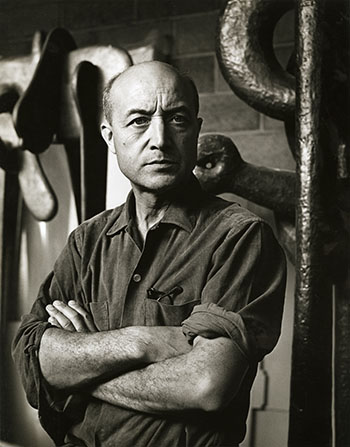Life Tips & Miscellaneous Travel and History Zen Philosophy and History Art and Sport Navigation of this blog
Isamu Noguchi
Isamu Noguchi (1904 – 1988) was a Japanese-American sculptor, designer and stage artist widely recognised for his work in sculpture, furniture design and landscape design. He is regarded as one of the leading artists of the 20th century due to the diversity of his work, which includes sculpture, furniture design and landscape design.

He was born in Los Angeles in 1904 to Japanese poet Yonejiro Noguchi and American writer Leonie Gilmore, and came to Japan in 1907, initially living in Tokyo, but moved to Chigasaki a year later, living near the old site of Botanmochi Stand in Hishinuma, Chigasaki, and attending Matsubayashi Jinji Elementary School.
In his later years, looking back on Chigasaki’s rich natural environment, he said: ‘I was lucky to spend my childhood in Japan, which is sensitive to changes in nature. In Japan, I was always close to nature. My development as an artist was nurtured in Chigasaki…”.

He took a leave of absence for a semester in 1915 and apprenticed under his mother’s private tutelage to a finger-maker (a furniture maker in the narrow sense of the word sashimonoshi) in Chigasaki, and after leaving school, he enrolled alone at the Interlaken School in Rolling Prairie, Indiana in July 1918, but the school closed in August 1918. Edward Lumley took his father’s place, boarding at the C. Mack home and attending La Porte High School, where he graduated top of his class. In Chigasaki, he moved from one house to another in four different homes, making his stay there a net of six or seven years.
After the war, he designed and produced the Noguchi Table in 1947. This is known as an icon of mid-century modern design, and the table is characterised by the simple and beautiful combination of a glass top and wooden legs.

In 1950 he returned to Japan and held a solo exhibition at Ginza Mitsukoshi, where he became acquainted with Kenzo Tange, Yoshiro Taniguchi and Antonin Raymond, among others; a year later he was commissioned by the mayor of Gifu to design the Akari series made of Japanese paper in the motif of the Gifu lanterns.

He studied ceramics under Kitaoji Rosanjin in Kamakura and produced unglazed works. Returned to the USA in 1961 and set up a studio in Long Island City, where he installed his sculpture Black Sun at the Seattle Art Museum in 1969.

‘The Gate’ is installed for the National Museum of Modern Art, Tokyo.

The sculpture used to have a two-colour scheme of red and black, but was repainted in 2022 and is now a single blue colour.

Places to see Isamu Noguchi’s work in Japan
In addition to those listed above, there are several other places in Japan where Isamu Noguchi’s work can be seen.
Isamu Noguchi Garden Museum, Takamatsu:
The Isamu Noguchi Garden Museum, located 25 minutes by taxi from JR Takamatsu Station in Takamatsu City, Kagawa Prefecture, is a museum in which Isamu Noguchi’s studio is preserved as it was, with sculptures, gardens and the building itself on display.

The site is located between Gokenzan, the birthplace of Aji stone, and Yashima, the scene of the battle between the Genji and Taira clans, as described in “Oi no Kobun to Kaido yuku – Akashi Kaikyo / Awaji Michi“. The museum is a place where visitors can gain an in-depth understanding of Noguchi’s life and work.
The museum is open by appointment only, and visitors must apply in advance by return postcard or other means, specifying the time and place of their visit.
Sogetsu Kaikan, Tokyo:
Sogetsu Kaikan is located in Akasaka, Minato-ku, Tokyo, a five-minute walk from Aoyama 1-chome underground station. On the ground floor of the glass-walled building designed by Kenzo Tange, there is ‘Heaven’, a flower, stone and water plaza designed by Noguchi.

The Sogetsu Kaikan was built to commemorate the 50th anniversary of the Sogetsu school of ikebana, and is a venue where a variety of artists continue to present their creative work, including exhibitions, live performances, performances, location shoots and fashion shows, not to mention ikebana exhibition spaces.
Hakone Open-Air Museum (Hakone, Kanagawa Prefecture):
Several of Noguchi’s outdoor sculptures are exhibited in the Sculpture Forest in Hakone-cho, Ashigarashita-gun, Kanagawa Prefecture.

Moerenuma Park:
Moerenuma Park, designed by Isamu Noguchi, is located in Sapporo, Hokkaido, in a rich natural environment about 40 minutes by bus from Sapporo Station. It is known as a comprehensive art space integrating sculpture, nature and architecture.

The main attractions include the Glass Pyramid (HIDAMARI), the symbol of the park; Mount Moele, a 62-metre-high man-made mountain with a panoramic view of the entire park and Sapporo city when climbed; the Sea Fountain, a huge fountain 48 metres in diameter with a spectacular fountain show that takes place several times a day; the Tetra Mound, a square pyramid-shaped The park is also home to the Tetra Mound, a square pyramid-shaped monument.
Moerenuma Park was conceived shortly before Isamu Noguchi’s death and has since been completed almost exactly according to the original master plan by those who followed his wishes. The park, which combines elements of sculpture, park design and architecture, embodies his artistic vision and offers visitors a unique blend of beauty and harmony with nature.
Isamu Noguchi’s work is highly regarded for its diversity and innovation, and the uniqueness of his designs and sculptures – a fusion of form and function, natural and artificial, East and West – has had a profound influence on contemporary art.


コメント